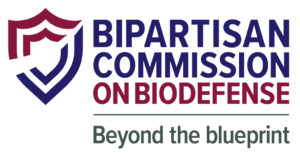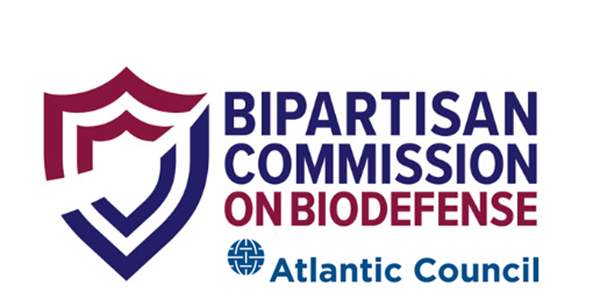20 Years After Deadly Anthrax Attacks, Federal Biowatch Detection System Still Does Not Work – Leaving U.S. Cities Vulnerable

FOR IMMEDIATE RELEASE
Contact: Steve Aaron
SRA Communications
(717) 554-8614
steve@SRACommunications.com
New Commission Report Details Critical Failures with Current Federal Biodetection Program; Provides Roadmap to Congress for Investing in Next Generation Solutions
WASHINGTON, D.C. (Oct. 13, 2021) – Twenty years ago this week, letters laced with deadly anthrax spores arrived at the United States Capitol and other locations across the country. Coming just weeks after the catastrophic terrorist attacks on September 11, the anthrax letters increased our nation’s collective fear and anxiety. Yet according to a new report released today by the Bipartisan Commission on Biodefense called Saving Sisyphus: Course Corrections for National Biodefense, our federal government still does not have a national biodetection system that works. The report details specific actions that must be taken by Congress and the Biden Administration before another devastating attack occurs.
“The devastating and tumultuous events of 2001 provided a wake-up call to the federal government to take biological threats more seriously,” said former Senate Majority Leader and Commissioner Tom Daschle, himself a recipient of one of the anthrax letters in 2001. “Decisions to establish programs like BioWatch were made with the best of intentions. However, nearly two decades later, no objective analysis of the program’s performance has determined that the technology actually works as intended. Despite the evolution of the biological threat, the Department of Homeland Security never revisited the BioWatch mission, including where and how it should be deployed to provide maximum information and assistance to local jurisdictions. The entire system has languished as the Department marched on with other priorities and the immediate threat of a biological attack faded from view.”
Current BioWatch technology – federally developed and supported detectors placed in large cities across the nation that are supposed to quickly identify a biological agent in the air – still performs poorly and is far from the deterrence mechanism it was originally intended to be. BioWatch detectors, when they work, only provide useful data hours or days after an event. DHS is trying to replace this decades-old technology, but Biodetection 21, the DHS acquisition program to identify and acquire new biodetection technology, has its own difficulties. BioWatch is limping along until 2025 in hopes that the Biodetection 21 program acquires usable new technology and DHS can procure it, despite little evidence that this new approach will be any more useful in detecting future biological attacks.
“Congress cannot continue to justify investing $80 million a year in a program that cannot demonstrate value,” said Commission Co-Chair and first U.S. Secretary of Homeland Security Tom Ridge. “The Department of Defense has done it. NASA has done it. Industry has done it. The Department of Homeland Security should replace BioWatch equipment with other better performing technologies, many of which are currently available. Congress should then invest in a robust, permanent biodetection solution. The nation cannot wait until 2025 for this effort to fail. Policymakers should act immediately to replace this inadequate technology, before the next attack occurs.”
The Bipartisan Commission on Biodefense convened for the first time seven years ago because it recognized the severity of the threat at a time when the Nation lacked preparedness for a large-scale biological event. In hopes of preventing calamity, the Commission produced its foundational report, A National Blueprint for Biodefense: Leadership and Major Reform Needed to Optimize Efforts, in 2015. In it, the Commission noted that the nation was dangerously vulnerable to naturally occurring pandemics, terrorist and nation-state attacks using biological weapons, and accidental releases of deadly organisms from laboratories.
Nation-states such as China, Iran, North Korea, and Russia have invested and continue to invest heavily in advancing biotechnology, much of which is dual-use, that could generate large quantities of biological agents and weapons and result in horrific consequences. Terrorist organizations also want the asymmetric advantages that bioterrorism affords them and they continue to place materials online to show their members how to conduct attacks with anthrax, botulism, and other biological agents.
“It is for these reasons, among others, that we urge Congress to invest $10 billion a year for ten years in support of what we call the Apollo Program for Biodefense,” said Commission Co-Chair and former Senator Joe Lieberman. “We must invest boldly in a national effort that transforms U.S. capabilities – including biodetection technology – to respond quickly and effectively to future biological threats. The ability to effectively prevent pandemics and biological attacks rests on a sound foundation of science and technology. We need innovation – the sort of innovation that helps us solve difficult problems posed by biological threats like COVID-19 and bioterrorism.”
Download the new BioWatch report here.
About the Bipartisan Commission on Biodefense
The Bipartisan Commission on Biodefense was established in 2014 to conduct a comprehensive assessment of the state of U.S. biodefense efforts, and to issue recommendations to foster change. The Commission’s 2015 report, A National Blueprint for Biodefense: Leadership and Major Reform Needed to Optimize Efforts, identified capability gaps and recommended changes to U.S. policy and law to strengthen national biodefense while optimizing resource investments. In its report, Biodefense in Crisis: Immediate Action Needed to Address National Vulnerabilities, the Commission provides new recommendations and describes the extent to which the federal government has implemented the Commission’s recommendations. Other Commission publications have addressed critical needs for agrodefense, biodefense budgeting, diagnostics, an Apollo Program for Biodefense, biodefense of critical infrastructure, and State, Local, Tribal and Territorial response capabilities. In September 2018, the White House released the National Biodefense Strategy, a top recommendation from the Blueprint. The Commission continues to address biodefense challenges and to urge reform. Former Senator Joe Lieberman and former Governor Tom Ridge co-chair the Commission. Hudson Institute is the Commission’s fiscal sponsor.
